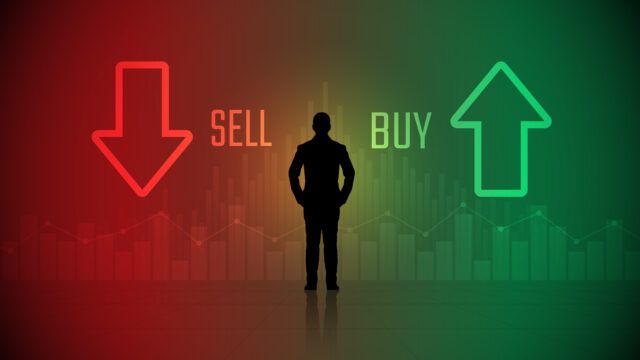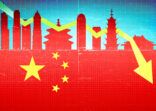China’s reopening rally still has further to go, although the next leg will likely be driven by earnings upgrades, rather than the sentiment-driven trading that characterised the first phase of the reopening rally, according to market observers FSA spoke with.
A surge in mainland Chinese and Hong Kong-listed stocks that added about $4trn in market value since November started to fade in February, largely as a result of a souring in the global macroeconomic backdrop and has led to some market observers to speculate that China’s reopening rally was done.
But market observers FSA spoke with were unanimous in their view that the market was just taking a breather to digest some of the negative macroeconomic news, notably following the collapse of Silicon Valley Bank in the US and the UBS-Credit Suisse merger and the reopening rally would continue once some of the positive macro data from China started filtering through into analysts’ earnings expectations.
“From our point of view, definitely the reopening trade is not over. We think that the whole reopening despite the recent hiccoughs or corrections still has a lot more room to go. We track the monthly macroeconomic data points and they are all pointing to the fact that things are improving on a month on month and year on year basis,” said William Yuen, investment director at Invesco.
“So that should also trigger companies back to a positive earnings revisions cycle. We have seen over the past two years pretty negative earnings drawdowns or downward revisions so we expect in the coming quarters we will see a lot more that would drive the overall Chinese equities space back to a much healthier situation.”
Bolt from the blue
The stock market capitulation after President Xi’s consolidation of power at the 20th National Party Congress in October quickly turned to euphoria the following month due to expectations that China would finally begin to walk back its zero-Covid policy.
In November, protests erupted in major cities over the country’s draconian lockdown measures, a rare example of social unrest in China being tolerated, which fuelled belief that Beijing would begin dismantling its zero-Covid policy sooner rather than later.
The MSCI index rose more than 50% from its low point in November through to February as rumours that China was moving away from zero-Covid proved correct with the Chinese government scrapping all quarantine measures and travel restrictions.
As the first leg of the reopening rally began to evaporate, some market observers have questioned whether the rally is now done. In February, for example, long China equities featured as the most crowded trade in Bank of America’s influential survey, the first time it did so since the survey began in 1985.
“Compared to the lows that were reached at the end of October, I think it was single digits, 9 times, 9.5 times P/E, it did go up but compared to the previous peaks we have seen in Chinese equities, there’s probably still some way to go.”
William yuen, investment director, invesco
But market observers FSA spoke with pointed to two major reasons why the rally is most likely not done. The first, and main reason, is that recent economic data has surprised on the upside and as that filters through to earnings revisions, it should trigger a further re-rating of China equities.
January-February data, for example, shows that retail sales growth turned positive at 3.5% year on year, while export growth contracted less than expected at -6.8%. Since it takes a while for macroeconomic data to filter through to companies’ earnings, most market observers FSA spoke with said they expect to see an improvement during the second half of the year.
The second reason is that valuations for China equities look cheap on a historical basis. RBC Wealth Management estimated last month that MSCI China is trading at a price-to-forward earnings ratio of 10.6x compared with a five-year average of 12.2x.
“At around 11x price-to-forward earnings, if you put that into perspective, that’s still below the long-term average. Compared to the lows that were reached at the end of October, I think it was single digits, 9 times, 9.5 times P/E, it did go up but compared to the previous peaks we have seen in Chinese equities, there’s probably still some way to go,” said Invesco’s Yuen.
Sector strengths
Any talk of a recovery rally naturally begs the question, which sectors stand most likely to benefit? The initial rally lifted a host of trade and tourism stocks such as Macau casinos and going forward market observers FSA spoke said they would continue to bet on anything that stands to benefit from the resumption of consumption.
As well as Macau casinos, this comprises sectors such as luxury goods, hospitality, domestic aviation and retail as Chinese consumers begin to ramp up spending and travelling having seen their household savings rise by a mammoth Rmb17.8trn ($2.6trn) last year.
There are other sectors that market observers expect to do well in addition. Internet companies came up frequently in conversations FSA had with market observers with many pointing to the fact that the government has largely drawn a line under the regulatory clampdown that has characterised the past 18 months to two years.
One market observer FSA spoke with pointed to Alibaba as a good example as its stock price has almost doubled since October as the tech giant has quietly moved on from the $2.8bn fine it paid in 2021 for failing to comply with anti-monopoly rules on the disclosure of transactions.
“Take your decarbonisation driven-companies, EV batteries as an example, they are also at an interesting point now because we’ve seen their adoption completely independent of the cycle.”
Juliana Hansveden, portfolio manager, Ninety One
Anything broadly that benefits from long-term, structural trends would also be a good bet, according to market observers. Several market observers pointed out that China is in a much different phase of its economic cycle than the rest of the world and in targeting 5% economic growth this year is likely going to have to boost spending in a number of critical industries.
One good example of a sector that is benefiting from long-term, structural trends is the EV sector, according to Juliana Hansveden, portfolio manager in the sustainable equity team within the multi-asset team at Ninety One.
“Take your decarbonisation driven-companies, EV batteries as an example, they are also at an interesting point now because we’ve seen their adoption completely independent of the cycle,” she said. “It is just policy and the trajectory the world is facing and we’ve seen the adoption of EVs come through quite strongly in China.”
Headwinds on the horizon
Market observers FSA spoke with were quick to point out that most of the headwinds that China has previously faced have now begun to dissipate. In addition to the dismantling of its zero-Covid policy and the end to its regulatory clampdown on the tech sector, the government has also introduced measures to stabilise its property sector.
In November, the People’s Bank of China and the China Banking and Insurance Regulatory Commission issued their 16-point plan, a series of easing measures that were designed to draw a line under the turmoil that has plagued the sector ever since the government introduced its three red lines policy in 2020.
“If you look at US companies, they sell products and services to Chinese customers and it would be very hard for them to completely redirect their business from China.”
Xiaolin chen, head of international, kraneshares
The one headwind that has gotten worse during this time, not better, though is geopolitical tensions. After a brief détente between the US and China appeared to emerge in November when President Xi and US President Joe Biden met on the sidelines of the G20 meeting in Bali, relations have since soured, particularly over an incident that involved the US shooting down an alleged spy balloon from China in February.
“Geopolitical risk is hard to quantify but I read different research papers and one of them tries to quantify the extent to which geopolitical risk is being priced into the equity markets. During the peak when the US official [Nancy Pelosi] visited Taiwan, it soared to 97%, whereas now it’s around 60%,” said Xiaolin Chen, head of international at KraneShares.
“Is it high? Yes, it’s high, but it’s come down from a very high level. If you take a step back as well, it’s important to remember that China is still the number one trading partner with the US. If you look at US companies, they sell products and services to Chinese customers and it would be very hard for them to completely redirect their business from China.”
The other notable risk regarding China would be a continued deterioration in the global economy, either because of some flare-up similar to the collapse of Silicon Valley Bank on a greater scale or the Federal Reserve miscalculating with the pace of interest rate hikes and tipping the world economy into recession. Again, most market observers think the impact on China would be minimal though.
“Yes, there is a concern given the global economy but that will eat into the export sector of China. But I think going back to a lot of discussions we’ve had, we think that the key catalyst for China’s recovery this time around is less about exports and it’s more about the domestic economy. In our view, that would offset the impact there may be if there’s a global recession,” said Invesco’s Yuen.

















